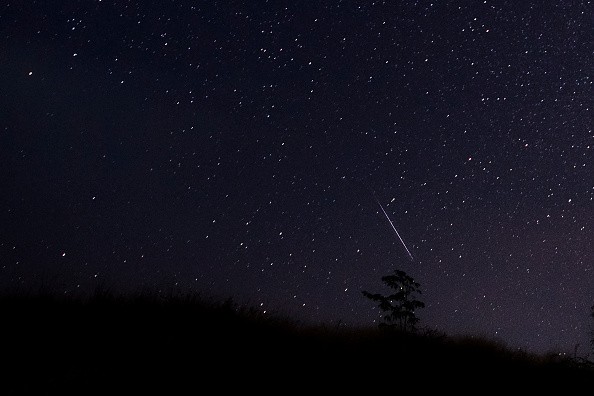Although the calendar is running out of pages and the new year is less than two months away, 2021 still offers a number of interesting astronomical phenomena to look forward to, including twin meteor showers.

Absolute Peak of Taurid Meteor Showers
During the first half of November, both the Northern and Southern Taurid meteor showers will peak, with each event having the potential to release extremely bright fireballs over the night sky.
According to the American Meteor Society (AMS), November is one of the best months to see meteor activity in the Northern Hemisphere. While there isn't likely to be much action this month, the two Taurid radiants, as well as the Leonids, keep the sky busy.
According to the AMS, the Southern Taurids are the first of the two showers to peak, peaking Thursday, Nov. 4, into the early hours of Friday, Nov. 5. The Northern Taurids will arrive a week later, during the night of Thursday, November 11 into Friday, November 12.
While these days are regarded as the showers' absolute peaks, they are both long-lasting occurrences, with meteors shooting over the sky in the weeks leading up to them. This implies that meteors connected with the Taurids may be seen throughout the first two weeks of November at almost any hour.
Although each meteor shower only produces around five meteors each hour, the varieties of meteors that flash over the sky may be spectacular. According to AMS, The Taurids (both branches) are abundant in fireballs and are often responsible for a rise in fireball reports from September to November.
Also Read : Meteor Fireball Lights up Mexico Sky Together With Arrival of Hurricane Delta and Minor Earthquakes
Fireballs to Flash Across the Nighttime Sky
Fireball is a meteor that is so dazzling that it may light up the whole sky for many seconds before dissipating. Even in the midst of a huge metropolis, where there is frequently too much light pollution to view lesser meteors, they may be seen.
After midnight, local time, when the radiant points of the showers are high in the sky, these fireballs may flash in the sky at any moment after sunset, but the optimum time for seeing meteors will be after midnight, a local time when the radiant points of the showers are high in the sky.
Fireballs, on the other hand, might erupt anywhere in the sky, not simply in the direction of the radiant spots.
Owing to the Taurids' extended endurance, stargazers may wait for a clear night to see if they can identify any shooting stars rather than risk missing the show due to clouded circumstances on peak night. However, as the Taurids disappear, there will be another meteor shower to look out for before the end of the year.

Fireball Sightings
The Leonid meteor shower will peak late Wednesday night, November 17, and early Thursday morning, November 18. Around a dozen meteors per hour are common during the Leonids, with a few fireballs feasible during the waning Taurids.
If you are chance to observe one of these remarkable occurrences, please report it to the American Meteor Society and recall as much information as possible. The report should include things like how bright it is, the length of it across the sky, the color, and duration (how long did it last).
Individual reports are shared with other organizations who are interested and kept for statistical reasons. The Fireball Sightings Log, which enables visitors to track the fireball activity reported from throughout North America over the course of a year, also makes reports available to the general public.
Relate Article : 2021 Orionid Meteor Shower is Nearing its Peak: Here's When and How to View This Celestial Show
For more news, updates about meteor showers and similar topics don't forget to follow Nature World News!
© 2025 NatureWorldNews.com All rights reserved. Do not reproduce without permission.





